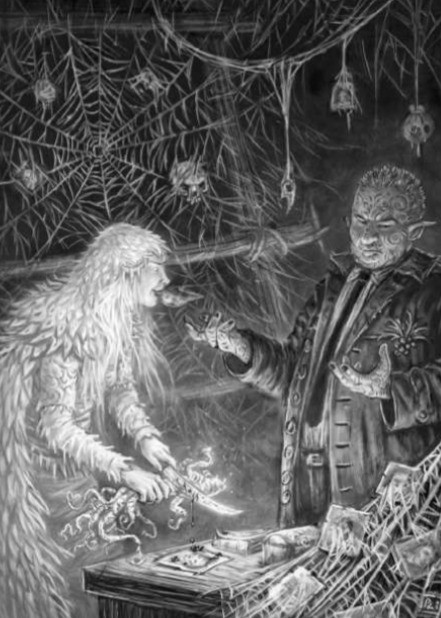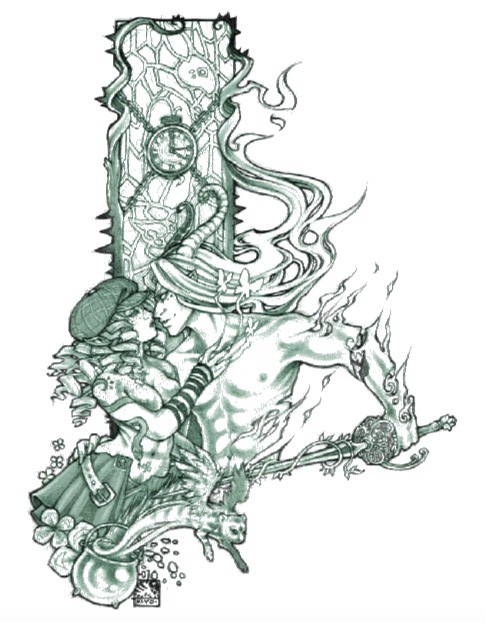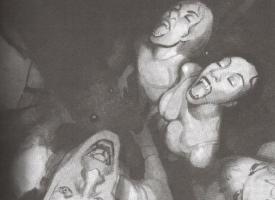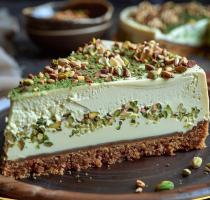Hedge Sorcery
Forgotten Lore - Issue 4

By The King’s Raven and LOOK
Hedge Witch
On her way to an unhappy betrothal a young woman shares a crust of bread with a disfigured beggar woman. The beggar promises to repay her kindness with tutelage in the woman's arts: Home-making, childbearing, cooking, witchcraft. A valiant knight spends three days locked in battle with a terrible dragon. Finally on the eve of defeat the dragon offers its greatest treasure in exchange for its life. Following cryptic hints a scholar calls up the devil at the crossroads, and sells his soul for power.
The magic of Faerie isn't unique to the grey neighbours, the most powerful faeries can grant the gift of witchcraft; as a reward, a payment, or just so their enemies will leave them alive. Being connected only by the fact a Faerie chose to grant them, or their ancestor, magic means that Hedge Witches seem like they'd have little in common; however their shared magic does lead to some common trends.
Experienced Hedge Witches are often rather eccentric. They think in terms of riddles and place a lot of weight in stories, favouring living stories like rumours, gossip, folklore and old wives tales over dry books. This is not Fae madness, or willful obtuseness. Rather, after a lifetime of working with Wyrd Sorcery the style of thought needed to weave Tales and prepare for Twists leaks into everyday life. A Witch who when asked for advice responds with a cryptic rhyming phrase isn't trying to make things harder, it is simply that one some level she finds it natural to think of the problem as a Hex, with a doom to be puzzled out and fulfilled.
Reputation is another common trait. Tales are woven from emotions and Glamour. Whether they're loved, respected or even feared, a Hedge Witch likes to ensure the people around them have strong feelings. If they live a more transient lifestyle or have fewer social links then they try to craft strong first impressions in place of a reputation. This however ties into a darker trait common to Hedge Witches, the fear of persecution.
Even when a Hedge Witch doesn't want to hurt anyone, her magic is wild and cannot be fully controlled. Perhaps because stories are more interesting with conflict, perhaps because persecution is so common in stories about witches. Twists can often make a Hedge Witch new enemies. Long lived witch families often raise their children on stories of an ancestor who burned at the stake. Some respond by isolating themselves, others embed themselves deep among a small insular community who can hide them when witch finders come around. Even if they're not actively mistrustful of strangers, most Hedge Witches try to make sure their reputation stays local and make sure it discourages any would be witch finders.
Becoming a Hedge Witch
Hedge Witches are made or born. To be a Hedge Witch requires a pledge boon of Witchcraft; this can only be granted by one of the True Fae and is worth +3. A Witchcraft boon is essentially the next level of Ensorcellment, and includes all the features of an Ensorcellment boon.
Hedge Witches can also be born, sometimes this is a direct result of the Wyrd “blessing” a child for reasons known only to itself, but mostly a Hedge Witch is born under a Pledge with a duration of generations. Many long lived “witch families” have passed down their secrets for generations.
My Ancestor Was
The rules for a generational pledge limit it to one generation per dot of the oathtaker's Wyrd, while an eternal pledge always remains with the signer.
The rules for Hedge Witches assume that if the True Fae can create eternal and generational pledges, they can probably create some combination of the two: If you're really lucky (or unlucky) you might a generational pledge with no limit. If things aren't quite so extreme you might get a pledge that lasts for Wyrd times ten, or Wyrd times one hundred generations.
The short version is that if you want to say you're descended from a medieval witch burnt at the stake, or you're one of the last living heirs to genuine Druidism, feel free. As a typical game doesn't go beyond a single generation it doesn’t really matter what the rules say is going to happen in five generations time.
Character Creation
The Hedge Witch template is simple; after creating a mortal add one single dot in Wyrd Sorcery and one dot in two Tales of your choice.
By default the pledge empowering a player character is assumed to have a duration of at least Lifetime, and any Tasks required by the Pledge have already been fulfilled by the character or her ancestors. Players who wish may take a Flaw representing Endeavours that remain unfulfilled or a Forbearance that must be upheld. The Storyteller and player are advised to think carefully before adding Tasks to the Pledge because of the enormous consequences breaking the deal could have upon the story.
As a generalisation Hedge Witches tend to focus on mental and social attributes, both are integral to their magic, while careful planning and being seen as part of the community keeps you alive when spells start to Twist. The most common mental skills are Occult (for obvious reasons) and Crafts (to work with Goblin Fruit). A disproportionately large amount of Hedge Witches work Goblin Fruits with traditionally feminine domestic crafts like cooking or weaving, no witch finder would ever accuse a woman because she can cook. For the same reason many warlocks work Goblin Fruit with the techniques of a craftsman's trade. Any social skill can be useful to a Hedge Witch, but it is extremely common to see proficiency in either persuasion or intimidation. However she comes across, a Hedge Witch needs to make an impact. A speciality in gossip, either for socialise or investigation, is common. Hedge Witches are naturally drawn to stories. If he lives apart from human society, a Hedge Witch may turn to a pet for companionship, leading to Animal Ken.
Common Merits among Hedge Witches include: Allies, Hedge Witches that don't live alone tend to embed themselves deeply in a small tight knit community, others can call upon their family. Common sense, to represent natural intuition. Holistic awareness. Unseen Sense. Fame, rarely above one dot representing their local community. Mentor, which usually represents a parent or grandparent experienced with magic; some Hedge Witches have a True Fae as a mentor though it is unlikely to reveal its true nature. Retainer is equally common and usually represents a child or grandchild being taught magic; if a Hedge Witch has a True Fae as a retainer it is almost certainly staying true to a narrative role and will not reveal or make use of more than a fraction of its real power.
Among those Merits usually reserved to Changelings only Harvest is commonly seen among Hedge Witches. It is not unkown for a Hedge Witch to have acquired a Token from a goblin market, while a rare few have a Faerie Favor or Hedgebeast Companion.
Concepts: Carnival con-artist, devout wiccan priestess, head of the woman's institute, reckless teenage witch, drifter gambler, last heir to a druidic legacy, village wisewomman, member of a large extended witch family, travelling bard, small town persona non grata, wicked witch, superficial neopagan “fluffbunny”, beloved yet tyrannical grandmother, gypsy fortune teller, cottage dwelling cauldron string witch.
Glamour: Hedge Witches do not have a Glamour pool, which is a problem since Wyrd Sorcery requires Glamour. Even if the Witch is Fae-Touched she will only have one point of Glamour, and would be unable to spend it on Sorcery anyway. So how to Witches cast spells?
Simple. Witches can move Glamour, they just can't store it. Hedge Witches can draw on three of the sources Changeling’s use: Emotions, Pledges and Goblin Fruit.
If a Hedge Witch wants to use emotions to power a spell she can take them from any nearby mortals just like a Changeling. The Glamour she harvests goes directly into her spell, this does not mean she has to cast the spell immediately after making a harvest roll. If a Warlock takes the time to tempt a young woman with stories of all the luxurious she could have, if she only buys his spell (Manipulation + Persuasion) then unless something happens, those emotions will still be there a few minutes later when the Warlock is ready to start casting his spell.

Goblin Fruit are slightly more complicated. Hedge Witches can't extract any Glamour by eating a nice Blushberry, they need to add it to their spells more directly. The stereotype of a cauldron exists for a reason, and many Witches brew up their magic; the goblin fruit go into the pot, adding a little Glamour to the mix. Because Goblin Fruit is the only way a Hedge Witch can actually stockpile Glamour most find some way of preserving them; one Witch uses her culinary skill to preserve fruit ready for the pot. Another extracts dyes from Goblin Fruit, storing Glamour in unearthly colours so she can quite literally weave Tales on a spinning Wheel.
Pledges: Hedge Witches can gain Glamour from a Pledge just like Changelings, they can even gain Glamour from Mortals if they find some way to seal the Pledge. A Hedge Witch simply “cashes in” the Pledge when they're ready to cast a spell.
Hedge Witches and The Hedge
Hedge Witches may not be Faeries, but they still have uses for Goblin Fruit and their ways of entering the Hedge. How? Witchcraft of course. Wyrd Sorcery has a verity of ways for entering the Hedge, it's just that Changelings usually find their innate abilities serve better.
At three dots Fantasy can be used to connect two places and it doesn’t matter if one of them is in the Hedge, but remember entering the Hedge means you agree to only leave by one of the proper exists, not a fantasy of an exit. However this does require a Sympathetic connection to at least somewhere in the Hedge, and aside from Hollows and Trods there's no guarantee that place will still exist next week (Incidentally, each dot of Hollow Wards decreases your Sympathetic connection by one step, if the result is worse than Described the Wards cannot be breached).
At four dots Transmogrification can turn an existing door into a Hedge Gate, though the caster has no control over the Gate's destination. Transmogrification can also add or change the key of an existing gate allowing access, this also requires four dots. If the Gate leads into a Hollow, each dot of Hollow Wards applies a -1 penalty.
Visiting the Hedge is dangerous, if you're not a Faerie it is more dangerous. Visiting the Hedge as part of a tale, with the possibility of Twists, is even more dangerous. Most Hedge Witches prefer to avoid using their magic, and instead rely on knowledge of a permanent Hedge Gate that leads directly to fruit, or they just buy from the local Goblin Market.
Incidentally, a Hedge Witch can carry three Goblin Fruits at a time, as though she had a Wyrd of one.
Wyrd Sorcery
Changelings perceive a world where everything is, in its own way, alive. They can bargain with the world, and through these bargains they gain supernatural powers. All Changelings use Contracts, turning to deals that have been negotiated for by the faerie race. Some Changelings make their own offers through Goblin Vows, even magic can be brought for a price. And some Changelings, they don't bargain. They weasel and trick the world around them into doing what they want. These Lost are feared and respected, for they are Sorcerers.
Wyrd Sorcery is rated one to five, and costs new dots x 7. Each dot of Sorcery comes with a free dot in one Tale, and a Sorcerer can never have more dots in any Tale than they have in Wyrd Sorcery.
Tales
The power of sorcery is to weave Tales, and to trick the world into playing along. There are four different kinds of tales that a Sorcerer can master, each with their own powers and themes. Tales may also be mixed to create new Sorcery that no single Tale could generate.
Tales cost new dots x 5. Each of the Elemental Courts finds that one form of Tale is closest to their ideals, and so may be purchased by members for new dots x 4 instead. Summer (Blessing), Winter (Transmogrification), Autumn (Hexing), Spring (Fantasy).
Blessing (Intelligence): can make a meek man mighty, and a coward courageous. It protects, enhances and empowers. It can enlighten the minds of beasts and grant unnatural properties to tool. Blessings are more than increased abilities. They are tales about the dragon-slayers who won against impossible odds, or the simple fool who outwitted the king’s traitorous chancellor. Common twists saddle the blessings with secret flaws, or cause them to grow out of the user’s control. Fortune may become too great, or a shield may become useless in the face of a wooden sword.
● Can increase the value of existing merits, attributes, skills and equipment at +1 (dot or bonus) per point of potency. Or mitigate existing penalties or flaws (also one-to-one with potency). Can grant 9-again. [Examples: A sword might be made sharper, a man's eye sight more precise. Wealth, beauty and talent accentuation.]
●● Can grant brand new skills and merits. Granting talent from nowhere, or causing fortune and beauty to spring from nothingness. Or grant an animal intelligence. Can grant 8-again. [Examples: A man may come into incredible wealth. A lad may find, with the silver blade in hand he is a courageous knight. A raven may gain the cunning and insight of a man.]
●●● Can grant unusual properties, or remove existing flaws and faults. Make animals speak and act as men. Can grant the Rote quality. [Examples: like a hat that makes you a better swordsman, or a sword that makes you prettier. A dog that can speak English with a slight German accent].
●●●● Can bestow impossible boons and abilities, intelligence to inanimate objects, and automatic successes. [Examples: Flying carpets. Swords that spray lightning. A
sentient computer. An arrow that never misses].
●●●●● Creates a Dynamic Blessing, one who's exact functions shift and change based on the objective for which it was made. [Example: A maiden blessed with eternal beauty might gain striking looks, then suddenly shift to wealth for fine cloths. Then, when a fire breaks out, resistance to burning to protect her image (though she might still choke to death, and emerge a gorgeous corpse).]
Fantasy (Wits): Fantasy is the art of creation from nothing. It can generate objects, structures, and even creatures from nothing. It can also warp the world at large, bending and connecting spaces, creating elements and cataclysm, and even adjusting the flow of time. Common twists render fantasy creations are fleeting or fragile. Cause them to feel artificial or hollow, and grant them insidious natures and personalities.
● Can manipulate light and sound, or make space/time appear larger or smaller. [Examples: Illusory party, including the sounds of talking and shadows at the windows. A hallway that it longer than it seems.]
●● Can create simple phantasms, inanimate objects and tools, or shrink/stretch space. Can create illusions with separate Miens and Masks. Can create illusions that react to stimulus in a simple, mindless manner. [Examples: A phantasmal car that runs on water. A phantom cottage. A room in which everything moves more slowly. A bag of holding. An illusion that shows what your rival is doing, in realtime.]
●●● Can create complex phantasms of living things. Connect or disconnect spaces, or alter specific parts of the time flow. [Examples: A phantom stallion, house which all doors lead back inside. A castle in which nothing ages.]
●●●● Can create thinking phantasms which grow, age and react to stimulus. Connect or disconnect distant spaces. Remove entire aspects of time or make time flow in exceptionally odd ways. [Examples: A phantom knight to ride atop the stallion, a gate that leads halfway across the world. A forest where it is always night.]
●●●●● Create a Dynamic Fantasy, one that changes and adjusts to meet its parameters. [Example: A phantasmal castle is made where a party is to take place when guests arrive. As they do the castle creates thinking phantasmal servants and grows in size to accommodate their expectations. Regardless of how long the guests stay it only lasts one night.]
Hexing (Presence): can make a mighty man weak, and a hero into a coward. It lays curses of ill fortune and poor health, and corrupts other magics. They lessen the mind, reducing men to beasts and seed madness and hallucination. A sorcerer who has mastered Hexing is scary indeed, for the curses she lays are spiteful things, that twist and fight back when their victims seek a solution. Common twists may cause the curses to grant unforeseen boons, or to spread from the target to their friends.
● Can decrease, but not remove, existing merits, and bonuses. Or exacerbate existing penalties or flaws. [Example: A brilliant driver can barely control his vehicle. A once rich man falls to poverty. A speakers occasional stutter becomes almost uncontrollable]
●● Can decrease skills, remove merits, or grant flaws, derangement, and negative states. [Example: A woman gains a sudden phobia of needles. A debating candidate stumbles over his every word. The beautiful princess finds others now see her as mundane. Cause someone to fall ill.]
●●● Remove skills entirely, reduce attributes. Add unfortunate properties to objects and people. Cause spells to twist. [Example: A sword cannot cut. A man forgets how to use computers. The strong become weak. Cause someone to never wake from slumber.]
●●●● Removes successes from rolls, grant impossible negative properties, or reduce minds and thoughts. [Example: Make a gun that never hits its target. Pen that causes the writer to take lethal damage. Give a man the mind of a beast.]
●●●●● Create a Dynamic Curse that adapts to cause maximum misery. [Example: A witch curses a man never to never find companionship. First the curse gives him amnesia, causing him to forget his home and friends. When he finally finds them it makes him unattractive and cruel to drive them away. Then when his loneliness leads to work- holism and promotions, the curse destroys his wealth just as it starts to attract sycophants.]
Transmogrification (Manipulation): Can make objects and creatures believe they are something else, effectively changing them into something new. Straw can be persuaded that it is really gold, and a stout door could be made to believe it is the thinnest silk. A man can be made a toad, or a cat made into a prince. Common twists cause the objects to recall their true nature, golden straw may still nourish goats, a frog prince might still be able to speak. Worse twists can subsume the original object, or propagate the change out of control.
● Shape and re-size existing objects. Alter cosmetic aspects of materials. [Example: Enlarge a doll house to real size. Cause cloth to shine and glitter like gold.]
●● Alter objects state and composition, Alter the cosmetic aspects of living things. [Example: Make paper as hard a steel. Cause a woman's hair to grow and change color.]
●●● Grant objects life and a semblance of intelligence (Blessing is required for true intelligence), change living into different natural creatures. [Example: A broom grows arms and carries water from a well. Turn a prince into a toad, or a swan into a maiden]
●●●● Turn objects into animals and vice versa. Change creatures into fantastic fantasy beasts. [Example: Turn a man into an armchair. Turn a Dog into Cerberus.]
●●●●● Create a Dynamic Transformation that twists and bends to best serve its intent. [Example: The Sorceress always desires the "best form for the occasion". At first the spell keeps her own beautiful form, though younger and more fit, then she walks into a gentleman's club and immediately changes to a dashing man. Suddenly a fight breaks out and she sprouts wings and claws and becomes a great dragon. Then, as her enemies surround her, she dissolves into a fine mist.]
Tales may also be fused, using multiple different aspects at a time to create a spell no single Tale could generate. Sorcerer's have no limit on how many different Tales they can use in a spell, nor their dot value.
However, a spell with a five dot Tale involved only dynamically manipulates the aspects of the spell associated with that Tale.
Step One: The Story
Before the Sorcerer even begins creating magic, the player must define the effects of the spell, including the application of any spell factors and the spell's Doom.
Factors:
Area of Effect is used for spells that have power over a specific location, or a defined area. Unlike most ritual powers Fae Sorcery does not measure itself in exact space, but instead in abstract sizes and areas.

As a general rule if the area targeted can be expressed as a discreet concept like "Miss Madagale's living room" or "Alice Glass' Hollow" then it's a valid target. The numbers below are merely rough approximates.
| Radius | Defined Volume | Target Number |
| 1 person | Basic target |
| Small Chamber | +1 |
| Small House | +2 |
| Mansion | +3 |
| An Estate | +4 |
| A Town | +5* |
* Affecting larger areas continues to increase at +2 successes and scales at a rate the storyteller finds appropriate.
Activation is used to create spells which fire on certain triggers.
| Trigger | Target Number |
| Instant | Basic target |
| Improbable | +1 |
| Infrequent | +2 |
| Common (or trivial trigger on demand) | +3 |
An activation trigger which can affect anyone, such as a potion, must have a range of touch. Other spells can be triggered at longer ranges.
Degradation is used to determine how often the spell twists after its casting.
| Duration | Target Number |
| Each Scene | Basic target |
| Each Chapter | +1 |
| Each Story | +2 |
| Each Chronicle* | +3 |
*This time frame is optional, and intended for Storytellers who have Chronicles set within one static world
Number of Targets is used for spell's effect that must be applied equally to separate Individuals.
| Number of Targets | Target Number |
| 1 | Basic target |
| 2 | +1 |
| 4 | +2 |
| 8 | +3 |
| 16 | +4* |
*Add an additional success to the target umber per x2 targets.
Potency represents the strength of the spell; it is used whenever the spell has an incremental effect. Spells that add or subtract dice from dice pools use Potency to determine the dice by which to modify the pools. Spells that inflict damage use Potency to determine how severe the wounds are.
| Potency | Target Number |
| 1 | Basic target |
| 2 | +1 |
| 3 | +2 |
| 4 | +3 |
| 5 | +4* |
*Add an additional success to the target number per die or wound.
Range is used whenever the Sorcerer wishes to affect a target further away than what she can touch. “Touch” range rituals require the Sorcerer to make physical contact with the target. In combat, this requires the sorcerer to touch the subject with her open palm (see “Touching an Opponent”, page 157 of The World of Darkness) during the scene where the final roll is completed. The Spell then takes effect against the target.
| Range | Target Number |
| Touch | Basic target |
| Visual | +1 |
| Intimate* | +1 |
| Known | +2** |
| Acquainted | +3** |
| Encountered | +4** |
| Described | +5** |
*Targets with whom the Changeling has a pledge are considered Intimate
**Requires the target's true name or a piece of the target's physical substance.
Size is used to affect very large targets; a basic success is sufficient to achieve a spell with power over a subject of size 20 or less. If multiple subjects are targeted by the spell, the size of the largest one is used for this factor.
| Size | Target Number |
| 20 | Basic target |
| 21-30 | +1 |
| 31-40 | +2 |
| 41-50 | +3 |
| 51-60 | +4* |
*Add an additional success to the target number per additional 10 size.
Step Two: Mitigation
Wyrd Sorcery is a chaotic and unpredictable thing, many Sorcerers dedicate a lot of time to finding ways to keep their spells in control. Mechanically speaking these actions reduce the Twist dicepool (see step four).
Decelerations: The Sorceress publicly declares what she will do, and how her spell will work. All who witness the deceleration become part of the Tale, usually it's audience, and their understanding of the tale they are in helps impose order on the chaos of faerie magic. Effect: The number of witnesses present subtract successes from the Twist. By default only witnesses with a natural ability to see through the mask or access to supernatural powers provide this benefit (Changelings, Ensorcelled Mortals, Other Supernaturals), though a sufficiently large number of mortals can help.
| Witnesses | Modifier |
| 1 | 0 |
| Several | -1 |
| Large crowd | -2 |
| One of the witnesses is a Gentry* | -1 |
| A very large group of mortals** | -1 |
*Actors, Props, Wisps, and Realms all count as a Gentry being present
**At least 100 people, preferably much more
Preparations: Sorcerers can ease their magic into the world. By creating circumstances in which the spell's effects are the logical result (in a narrative sense) the magic becomes less likely to twist.
The Storyteller should measure the difficulty of the tasks used to prepare a spell according to the scale used for pledge endeavours.
| | | |
| Lesser: | -1 | Success |
| Medial: | -2 | Successes |
| Greater: | -3 | Successes |
Conditions: Sorcerers can add conditions to their spells, limiting when and how often their effects manifest. By default Spells are assumed to manifest at all times, but by applying conditions the Sorcerer limits the spell, thus making it more "interesting" to the story and less likely to twist.
Effect: The probability and frequency of the trigger alters the Twist. How often a Condition should manifest is up to the Storyteller, but assume that any condition the player can easily control is at most "common",
| | | |
| Common: | -1 | Success |
| Uncommon: | -2 | Successes |
| Rare: | -3 | Successes |
Pledges: Every story follows its characters, and the Tales woven by Wyrd Sorcery are no different. If the Sorcerer has a pledge with the target(s)* that binds her to act in line with the Tale he wove then the Pledge will help impose order.
Effect: The pledge decreases the twist successes by the highest component of the pledge (treating negative components as positive). However if the target breaks the pledge immediately roll any Twist dice mitigated by the pledge. If the pledge Is somehow annulled then do not roll the mitigated Twist dice unless the target breaks his Pledge Tasks (which no longer comes with Sanctions).
*All initial targets must be within the pledge otherwise the mitigation does not occur.
Titles: There is one method of mitigation, and only one, that will guarantee the spell never Twists. That is to manifest a Title as the spell. Doing so is simple, attaining the Title is not.
Under most circumstances the doom of a spell will not harm a Title in any way, though ending the spell in such a way as to make its story meaningless has similar effects to besting an Actor in combat. An example would be triggering a hex's doom before the victim even begins to suffer.
Step Three: The Incantation
The first step to weaving a Tale is the incantation. The Sorcerer uses a silvered tongue and occult principles to tell a Tale, tricking the world itself into playing along with the story. First he pays the spells cost, one point of Glamour per dot in the highest Tale used in the spell. He rolls [Tale + the Tale's associated Attribute + Occult] as an extended action.
Over the following turns the Sorcerer continues to manipulate the world itself, rousing it to action. Each Increment he continues to roll that same dicepool, each time accruing more successes. However even sorcery has its limits, one cannot accrue more successes than he has dice in the pool he is rolling. However, there are a few factors that can affect the roll.
Time per Roll:
- 1 Minute: -3 dice
- 10 Minutes: -1 dice
- 1 hour: +0 dice
Other Sorceries
The standard time units for ritual magic are significantly shorter than those used by Wyrd Sorcery. It is the authors opinion that they are quite simply, too short. However should the players come into conflict with other sorcerers the Storyteller may wish to synchronise their casting times. For convenience the standard time increments are presented below.
- One Turn: +0 Dice
- Two Turns: +1 Dice
- Five Turns: +2 Dice
- One Scene: +3 dice
Other Modifiers:
The roll is within the Witching Hour (between 12PM and 1AM): +2
Players should note that Seeming or Kith blessings that enhance Attributes do not apply to Wyrd Sorcery rolls. Seeming or Kith blessings that enhance Occult can be used for Wyrd Sorcery, but do not increase the maximum number of successes.
Finally, spell complete. The Changeling spends a single point of Willpower and thrusts it into existence. It is at this moment that he must declare the spell's
doom.
Step Four: The Doom
Every spell created by Wyrd Sorcery has its doom, the condition in which the spell ends. The Doom is chosen by the sorcerer and until the doom comes to fruition that spell just will not end. Most Sorcerers choose dooms that are likely to be fulfilled long before a spell goes completely out of control.
The choice of doom is not entirely arbitrary. It must be related to the spell in such a way to give it a satisfying conclusion. A spell which creates wealth could have a doom which is fulfilled when the target uses his wealth for a certain task, or learns a moral lesson about wealth (which may or may not require him to lose his new fortune). As an absolute rule the Doom can never involve direct harm to anyone other than the sorceress herself.
Mechanically speaking every time the Degradation time expires, the Tale gains an additional point of Twists. These Twists often push the Tale towards its conclusion, and can even Twist the doom into something easier to fulfil. By the time a Tale has gone completely Out of Control it is nearly impossible to avoid fulfilling the doom for more than a few hours. Either because the magic forces the doom to occur, or because the doom itself has twisted into something so trivial it's bound to happen.
Step Five: Twists in the Tale
Changelings run their magic on contracts and deals, the terms are rigidly defined. If you want to know why this is you only have to look at what happens when you use faerie magic without a contract. Wyrd Spells are stories woven into reality, each with its own little sub plot and quirks. And, like stories, spells also have Twists, unexpected turns that not even the caster can predict. They can manifest when the spell is cast (especially without proper mitigation), or over time as it endures. To look at the Twists in the Tales woven by sorcerers. Twists are:
Neutral: Twists have a way of leaving the spell no stronger or weaker than it started, the Twists that aid the spell balance out those that hinder, leaving the spell no better or worse off than before, but far more whimsical. Other Twists don't affect the primary target of the spell but cause the magic to spread outwards, sowing chaos. They are not inherently bad or good, just interesting. A spell is just as likely to twist in a positive way as it is in a negative one, especially if that positive twist makes a scene less certain or more exciting.
Revealing: Wyrd sorcery deceives the world into following a tale, it is a fragile lie and the truth can often shine through. A Tale about straw spun into gold, for example, will often Twist to reveal the reality of the straw beneath the lies. The gold may burn like straw, or it may be a nourishing meal to animals, without sacrificing any properties of gold.
Chaotic: While a knowledgeable Sorcerer may know what kind of Twists are possible or likely, it is impossible to predict which ones will actually occur. Neither occult knowledge, or prophecy, can accurately predict a Twist. Rather than simply being inaccurate, Twists have been known to exploit the wording or symbolism of prophecies in whatever way creates the most interesting story.
Interesting: Wherever possible a Twist attempts to make the story more interesting. If a Sorceress turns herself into a vicious dragon, fearing a threat that exists only in her mind, then the Twists will spin a more interesting story than a dragon waiting in its Hollow for a few months. Perhaps the sorceress will be consumed by a dragon's greed and begin raiding hobgoblin gold mines, or perhaps a Twist will cause her to exhale a constant stream of smoke that leads a valiant knight to her location.
Inevitable: A tale woven by Wyrd Sorcery will always Twist if it lasts long enough, this is inevitable. The only way to avoid Twists is to weave Tales that end quickly enough.
Often tie back to the sorcerer: A Sorcerer is always a part of the story created by their own magic, no matter how carefully they craft the effects to avoid themselves at least some of the Twists will include them.
The roll
Twists have a dicepool equal to the [Successes of the Incantation + the Potency] (Yes, this means Potency is effectively counted twice). For this reason many Sorcerers often favour small weaker spells where the Twists are entirely removed (at least until degradation begins) through mitigation tactics. Others just raise up powerful, wild, magic and throw it in the general direction of their target.
One Success: Negligible Variance, Variance that has no real impact on the spell unless someone is deliberately taking advantage of it. Perhaps the figment is the wrong color, or only one edge of the blade is blessed.
Two Successes: Minor Variance, a quirk that could really upset the spell if the caster doesn't account for it. A disguise is a mirror image of the target, the blessing to athletics does not affect lifting.
Three Successes: Major Variance, a real major unintended effect. Curse spreads to the target's family and friends, the man turned into a toad can still speak like a human.
Four Successes: Severe Variance, at this point the spell probably causes as many or more problems than it solves (though if it solves her problem and creates problems for other people then the sorceress might not care). The spell that turns the user into a wolfman also causes him to lose his mind in rage, an illusion the character develops its own mind and seeks to usurp him.
Five Successes: Out of Control, the storyteller completely gains control of the spell and its factors. It still functions as intended, but likely in a way that causes change or won ton destruction to potentially anything outside its direct intention.
Wyrd Sorcery Cheat Sheet
Step One: The player chooses the Spell effects, applies factors and decides upon the spell's doom. (OOC)
Step Two: The Sorcerer sets up any mitigation factors. (IC)
Step Three: The Sorcerer pays costs and rolls to cast the spell. (IC)
Step Four: The Storyteller secretly rolls to see how much the magic Twists, and applies and mitigation factors. (IC)
Step Five: The spell takes effect, and possibly goes out of control.
The Limits of Power
Wyrd Sorcery is strong, sometimes extremely so, but one must never forget that accessing that strength comes at a cost. No Sorcerer can maintain an unlimited amount of magic, eventually the manifold story they weave will sweep them up and carry them away to fates beyond their control.
Mechanically a Sorcerer can safely have [Wyrd+1] spells active at any time. Every spell cast beyond that limit automatically gains +1 Twist per spell over the limit (including itself). This occurs after mitigation and thus can only be avoided by swearing the spell into a Title.
Unlike many forms of magic, Wyrd Sorcery cannot directly harm other people, though it can invoke circumstances that will cause harm. For instance, a Sorcerer cannot shoot a lightning bolt (because it is instantaneous and has no meaningful duration), but can invoke a thunder storm that is destined to strike them; (then carry on striking other things).
Wyrd Sorcery cannot affect objects made of iron, nor can they create iron, fake or real. Nor can they be used to alter template inherent traits of Changelings or other supernaturals (so a curse cannot cause a Vampire to be unable to feed, or a Werewolf unable to change).
Resisted or Contested
Supernatural power in World of Darkness use two different types of resistance rules, as does Wyrd Sorcery. In general any effect that is all or nothing (mind control, sleep spell, transformation), and who's success would immediately have an enormous impact on the target, is contested (rolls Resistance Attribute + Power Stat). Whereas incremental spells (penalties, small changes, etc.) or those for which successes are counted towards the effect, are resisted (subtract [Resistance Attribute] from the roll).
Twisting another's magic
When Sleeping Beauty was cursed to prick her finger and die, one good faerie still had her gift to give. She chose that the princess would not die, but instead fall into sleep.
You too can Twist another's magic.
Intentionally causing another Sorcerer's spells to Twist requires three dots in either Blessing or Hexing, depending on whether you wish to make the spell kinder or harsher upon its target. There are however a few special rules that must be taken into account:
- No Sorcerer can intentionally Twist their own spells; this rule is absolute.
- A Sorceress can add Twists, but cannot modify existing ones.
- A spell that Twists another spell always has the same doom: "When the target spell meets it's doom".
- A spell that Twists another spell can in itself Twist; roll as normal to see if the spell Twists when it is cast, but only use the original spells factors when determining when additional Twists arise. The Storyteller is still encouraged to think of both spells when defining how the new combined spell Twists.
Storyteller's Note: The Joys of Twisting
Changeling Sorcery is strong. Strong enough that, left unchecked, it can alter the entire course of a game. Fortunately, twists are there to help. No matter how careful a player is with their spells, or how much they try to mitigate, twists are bound to occur. This is the best time to deter "power casting" as well as to remind the characters that their magic isn't entirely theirs.
Twists can be great for slightly shifting the purpose of the spell, or adding a disadvantage that makes it much harder to manage. If they like to game in easy dooms, perhaps twist it into something more difficult. If they've got a super powerful sword, maybe the blessing suddenly jumps to whatever weapon the sword clashes with. Hell twists can even be a great way to get the characters out of trouble, bending villains magic or even their own to be slightly more/less helpful in a time of need can be a good way to lessen the next time their "turn that guy into stone" spell, causes the target to become a golem of living stone, as opposed to a helpless statue.
One thing to remember though, Twists are NOT intended to derail the current story. And while it is possible for a twisted spell to spawn a chapter of its own, it is generally better when the twists tie back into the plot. Take some creative liberties when needed, it’s the storytellers prerogative after all. If a scene is sufficiently interesting without a twist, bank that point for later. Twists also don't need to occur EXACTLY at the start of a Scene/Chapter/Story, they can manifest halfway through at the most dramatic moment.
The bottom line here is: Twists are there to make the story better, and to deter power gaming the system. So use them to have fun, not simply as punishments or rewards.
Sorcery Kiths
New Kith: Fairest Enchantresses
Stolen to serve as vessel rulers to an Arcadian overlord; the fairest of them all were taught deeper secrets of Arcadian magic, their power and position was enough for many to escape their Keeper's clutches.
Fairest Enchantresses return to earth bearing the secrets of Noble Magic. They can spend Glamour to increase their dicepool for Wyrd Sorcery on a 1 for 1 basis, and in addition they may add their Striking Looks bonus (to a maximum of +2) to all Sorcery rolls.
New Kith: Wizened Hag
In Faerie these slaves tended to the cauldrons and spinning wheels of Arcadian sorcerer's above such menial labour. Some of them stole enough of the magic they helped create to escape through the thorns.
Working unseen at the feet of skilled faerie sorcerer's the Hags absconded with the secrets of Spellcraft. A Hag may spend Glamour to increase Occult and Sorcery rolls on a one for one basis, and gains an additional die when using Sorcery on behalf of a paying customer.
Optional Modified Rules
Wyrd Sorcery was written after Changeling: the Lost. Consequently there some material that might benefit from being redefined to tie into the Sorcery system.
The following optional rules are presented:
The Autumn Court's one dot mantle provides a bonus to Sorcery, instead of Contracts.
The Witchtooth Kith Blessing applies to Hexes, not Contracts. Note that regardless of whether you update the Kith Blessing, a Witchtooth's ability to spend Glamour on Occult does apply to Sorcery.
The Office of the Vizeral Council requires 12 dots in Tales instead of Contracts; and a replacement Privilege for The Clausmaker's Boon: They apply an automatic mitigation factor equal to their monarch's Mantle -2 on all Wyrd Sorcery used on behalf of their duties.

























